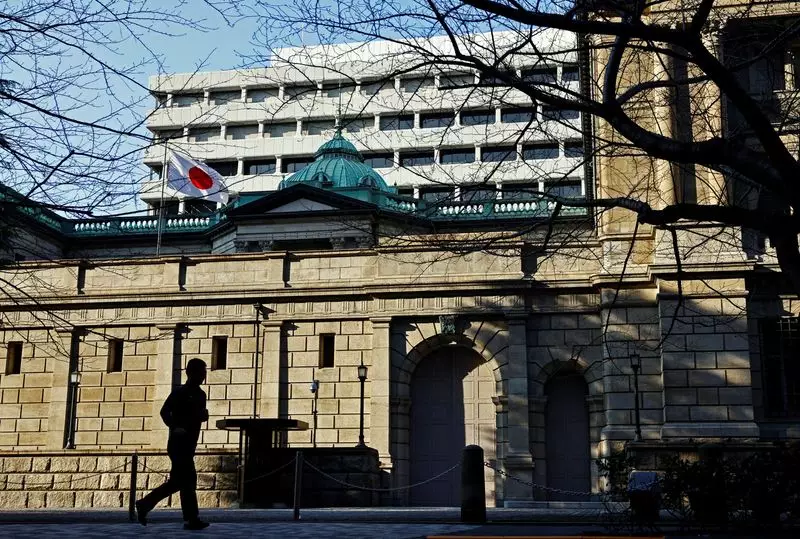The Bank of Japan (BOJ) is on the verge of making a significant policy shift, marking its first interest rate increase since July 2022. This move, targeting a raise from 0.25% to 0.5%, is poised to bring rates to levels not seen since the global financial crisis of 2008. The backdrop for this change is a complex interplay of domestic economic indicators, international market dynamics, and the broader implications of U.S. fiscal policies on global trade. As the central bank prepares for this pivotal meeting, it faces the challenge of aligning market expectations with its internal assessments of economic health.
The Influence of Global Events on Monetary Policy
Recent global events, particularly U.S. President Donald Trump’s trade tariffs, have heightened concerns about their potential impact on market stability. However, prevailing market sentiment appears relatively unfazed by these threats, with a widespread stock rally suggesting confidence in economic resilience. Analysts note that the BOJ’s decision will reflect its commitment to a gradual return to normalcy in monetary policy, rather than a response to immediate external pressures. “Given the current market resilience, it seems likely that the BOJ will proceed cautiously with its rate hike plans,” commented Naomi Muguruma, a notable strategist.
Understanding Market Reactions and Expectations
The anticipation surrounding the BOJ’s meeting has driven speculation among traders, who have almost fully priced in the likelihood of an interest rate hike. This develops in a context where yields on Japanese government bonds (JGBs) have seen upward trends, suggesting that investors are preparing for a tightening cycle. Furthermore, the stability of the yen against the dollar remains a crucial factor, as the currency maintains a relatively stable position close to a one-week low.
Market signals preceding the BOJ meeting have been deliberate, with Governor Kazuo Ueda and his deputy providing robust hints about the direction of monetary policy. These pre-meeting communications have not only propelled the yen but have also intensified predictions around recurring rate increases throughout the remainder of the year. “With the BOJ signaling clearly, the markets are aligning themselves to what seems inevitable given the current economic trajectories,” noted Mari Iwashita, an executive economist.
Inflation trends in Japan provide critical insights into the rationale behind the anticipated rate adjustment. Recent reports indicate that core inflation has reached a 16-month high, driven primarily by escalating fuel and food prices. This persistent inflationary pressure aligns with the BOJ’s projections and supports the argument for gradual interest rate hikes. The central bank’s goal of achieving a sustained 2% inflation rate appears increasingly within reach, especially as wage gains begin to materialize across various sectors of the economy.
Moreover, the BOJ’s forthcoming quarterly outlook report is expected to adjust price forecasts upward, reflecting the likelihood of sustained economic growth. The interplay between rising consumer prices and wage increases is fundamental to the BOJ’s strategy, as it emphasizes the necessity for a cycle that lifts consumption and facilitates corporate resilience to cost increases.
Looking ahead, the trajectory of BOJ interest rates will likely hinge on several external and internal factors. Many analysts predict a potential rate hike later in the year, with the frequency being roughly biannual. Each subsequent increase will depend significantly on the interplay of U.S. economic performance, the Federal Reserve’s policy shifts, and currency fluctuations. Additionally, Japan’s political landscape, including an upper house election scheduled for July, introduces yet another layer of complexity. The potential outcomes from these elections might affect the BOJ’s strategic timing for rate adjustments, as it navigates the pressures of maintaining economic stability amidst evolving political dynamics.
The forthcoming interest rate hike by the BOJ represents a careful balancing act in Japan’s economic policy landscape. Policymakers are poised to navigate a future marked by heightened global uncertainties while fostering domestic growth. The path forward will necessitate astute management of market expectations, inflation targets, and wage growth trends. Ultimately, the BOJ’s decisions in the coming months could set the tone for economic recovery in Japan, reflecting a broader commitment to stabilizing both the domestic and global economic environment.

